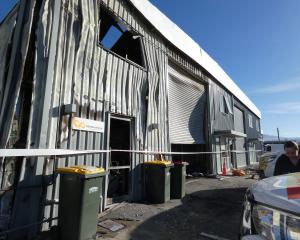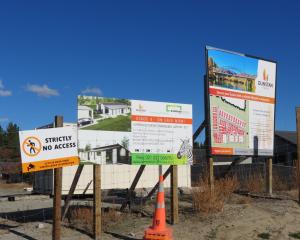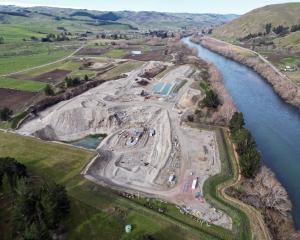In 1874, it cost about £700 to build a church in Cromwell.
That money bought you a stone building cemented by mud mortar, solid enough to stand for at least 140 years.
Tomorrow, on St Andrew's Day, St Andrew's Anglican Church in Cromwell will celebrate 140 years of continuous service since it was dedicated on November 29, 1874.
The building, constructed by James Taylor on land donated by Cromwell hotel keeper John Marsh between Donegal St and Molyneux Ave, was paid for with money collected by fundraising.
Although the church was completed and dedicated in 1874, consecration had to wait until 1880 when a bishop returned to the area.
During its 140 years, additions to the church have been undertaken, such as leadlight windows in 1893, installation of electric heating and lighting in 1926, and stained-glass windows in 1966.
The Rev Damon Plimmer moved to Central Otago with his family in 2013 to oversee the church.
Speaking before the 140th celebration this week, with some assistance on dates and information from parish members Noeline Watson and Jean Cox, he explained the history of St Andrew's.
Mr Plimmer said the Anglican church in New Zealand was celebrating its bicentenary this year.
''The first missionaries came to New Zealand in 1814. If you look at New Zealand history [since Europeans arrived] that makes the church quite old.''
The diocese of Dunedin, which covered the Cromwell area, was formed in the 1850s, meaning St Andrew's in Cromwell was not much younger.
Mr Plimmer said St Andrew's was originally a separate parish, but in 1990 became a part of the Upper Clutha parish.
There were not many churches built in the 1870s still around, he said.
''A lot of early churches in New Zealand would have been built of wood, so I think it is quite striking that it is built out of stone.''
The church was a Heritage New Zealand category two building, meaning it did not receive any maintenance funding from the Historic Places Trust.
Money for covering maintenance came from parishioners, with assistance from groups such as the Central Lakes Trust, which paid for replacement of the roof and floor repairs.
''They have been very generous to us.''
He described the church as ''much loved''.
''We have tried to open it up to the community more so they can appreciate it.''
Events such as concerts and ''big sings'' were often hosted at the church.
However, earthquake strengthening was required.
''That will have to be dealt with over time. We are still waiting for ... direction on that.''
The church had had its share of repairs.
People's warden for the Anglican Parish of the Upper Clutha Noeline Watson said the floor had to be replaced after a speaker at the front of the church sank into the ground one day.
In 1966, a set of stained-glass windows were installed and dedicated, after being constructed in London and paid for by a legacy left in 1944 by Mary Anne Richards as a memorial to her late sister.
Items in the church, such as altar plates and frontals, were donated by members of the Hotop family, who also replaced kerosene lamps and heaters with electricity.
A pipe organ, operated by organ pumpers, was installed in 1919, before being overhauled and converted to electric power in 1961.
Over the years, the church had had about 34 clergy, including Tom Brown, who went on to become the Bishop of Wellington.
A 10am service to celebrate 140 years of continuous service will be led tomorrow morning by the Right Rev Dr Kelvin Wright.
Past members of the clergy and community will also attend.
Mr Plimmer said anyone was welcome at the service.
''This is a treasure for this community and we would love people to join us as we celebrate it.''
Afterwards, people are invited to a morning tea in the church hall.












